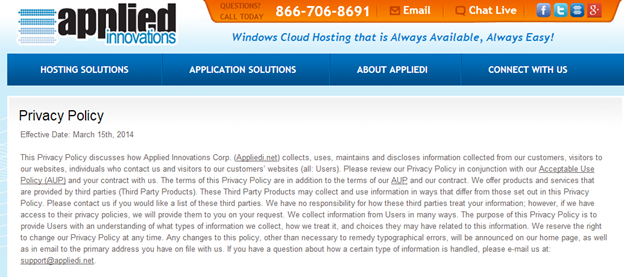Boost Sales & Avoid E-Commerce Shopping Site Security Risks
Each year the stats come out to support the fact that consumer confidence is rising when it comes to online shopping, with more and more people enjoying the benefits of shopping online – U.S. e-commerce spending topped $263 billion in 2013, with the U. S. Commerce Department and Forrester Research projecting that U.S. consumers will spend $327 billion online in 2016. In this post we explore how you can boost sales and avoid e-commerce shopping site security risks.
What is causing this shift in confidence?
Consumer confidence shopping online can be attributed to a number of things including:
- Faster delivery
- Easier return policies
- Free shipping
- Increase in the number of goods available online
- Improved e-commerce sites and services
- Increase in online loyalty programs
- Increase in popularity of smartphones and tablets for online shopping
- Strong consumer demand – i.e.: rather shop in their jammies from home than battling crowds
Reduced E-Commerce Shopping Site Security Risks
Another factor that contributes to the increase in consumer confidence with online shopping is the improvement in online security measures. Consumer knowledge of how to shop has also changed, making it easier for consumers to know what to look for to shop safely online. Some consumers now even view online transactions as having less risk than in-person transactions at bricks-and-mortar retailers.
This confidence has had a huge impact on the economy with each shopper spending more on average. U.S. consumers in 2016 will each spend an average of $1,738 online, up 44% from $1,207 in 2012.
Although confidence is increasing, resistance still remains as security breaches become more sophisticated. Companies of all sizes are subject to security threats and no one seems to be immune to them, regardless of the size of the company.
Security breaches are costly – costs which include the loss of trust that is a result of a customer’s credit card being compromised. Would you purchase again from a site where your information was compromised?
A survey by Software Advice, a comparison site for point of sale systems, revealed that more than three-quarters of consumers would be less likely or completely unwilling to buy products from a company that allowed their personal data to be compromised.
- 35% of all respondents said they would stop shopping with that company
- 22% of consumers said their shopping habits at a company would be unaffected if hackers stole their data from that company.
- 33% of consumers would be much more likely to shop where they are confident their data is safe.
10 Tips to Boost Sales & Avoid E-Commerce Shopping Site Security Risks
What can you do as an online business to help keep your site safe and keep customer confidence at its highest? Check out these 10 Tips to Boost Sales & Avoid E-Commerce Shopping Site Security Risks:
1. Security Certifications
A Secure Sockets Layer encrypts customer information when the customer enters his or her credit card information. If your customer sees that your address begins with “https” (s for secure), they can be sure that your ecommerce site uses an SSL. This will help instill confidence in your customers to purchase from your site. Case studies show that a 10-34% increase in online transactions occurs when an SSL certificate is displayed.
2. Authentication Layers
Authentication Layers Require that customers go through several verification layers before they can recover their password. Layers including having to answer questions before the password information is sent to an email address. This will help to prevent private information from ending up in the hands of a third party. Lastly, limit the number of login attempts. Hackers try to gain access to systems by running software that generates thousands of password attempts. Try implementing a 15 minute break between numerous attempts or enforce a three attempt limit, where the customer has to call into your company for password assistance.
If users have to login to your website to complete a sale, force users to generate strong passwords. Good passwords should contain a mix of upper case, lower case, numbers, and possibly, other characters.
3. Provide different payment options for your customers
It’s hard to believe, but some customers still may not be comfortable providing their credit card information online, so it’s important that you provide your customers with different payment options, to ensure that you don’t lose their business. PayPal allows customers to make purchases without using their credit card each and every time – furthering your customers options and increasing your chances of completing that purchase. This will also help prevent you from losing sales after well-publicized security breaches. Online sales tend to drop after well-publicized security breaches. A study by USA today found nearly a quarter of Americans have altered their online purchasing habits due to security concerns brought on by recent data breaches in major retailers . The report concluded the following:
“A full 24% of those surveyed said they had stopped buying anything online in recent weeks because they were concerned about the safety of information they might put online,” Weise and Guynn state, “Most surprisingly, 56% said they had cut back on the number of Internet sites they used and were only going to large, well-known companies they were confident were safe.”
You can also direct your customers to fax, phone, or mail for order fulfillment.
4. Include a privacy policy on your site
Instill confidence with your potential customers that you will do your best to protect their sensitive information as well as communicate what you will and won’t do with you buyer information. Include a policy that clearly informs what policies you have in place. Most customers feel more comfortable buying from someone who agrees not to release their personal information including contact and buying behavior to third parties. There are privacy policy templates and generators online that you can use to create your own policy. In addition, your local Better Business Bureau and other government agencies also provide information on privacy policies for your business.
5. Avoid redirects when possible
Buyers will receive notifications when the SSL certificate expires, letting them know that proceeding with a purchase could put their information at risk. This is where you’ll lose many consumers. Another way to lose buyers is to submit them to redirects that trigger another warning from the SSL certificate authority.
What this means is that any time a buyer clicks a link to buy something and leaves your site to do so, a warning will pop-up to let them know they’re no longer dealing with your ecommerce website but someone else entirely. This could be due to third-party credit card processing sites or simple redirects to purchase from another vendor. Whatever the reason, buyers may become weary and choose not to continue with the sale.
6. Guarantee your security
If you are confident of your site’s security, why not guarantee payment? This will encourage buyers to trust your site and remove customer barriers to purchase. If you have great security and track record – flaunt it. Let your customers know that you haven’t had a security breach. Do you use special technology or do you test your systems regularly for breaches? Keep your customers’ minds at ease by telling them this. Even a little bit of effort to communicate the steps you are taking to guarantee their security will help give your customers confidence in their decision to purchase from your site.
Amazon.com clearly states that none of its 3 million customers have reported fraudulent use of a credit card resulting from purchases made at its site.
7. Invest in security
If you run an e-commerce site, you will want to ensure that your site is properly secure. Most e-commerce shopping site security risks are easily avoided by setting up a firewall and layering security to protect from internal and external threats including malware. A layered security solution should include firewall, anti-virus, endpoint security to protect devices on your network, patch deployment and the use of encrypted data. Regular updates are also important to ensure that your system is safe from security vulnerabilities.
8. Consider the Cloud
Protect your organization against a DDoS attack by considering moving to a cloud hosting solution, if you haven’t already. Security in the Cloud can automatically detect these attacks and will move your site to another location automatically to isolate and block the attack on your system.
9. Become PCI DSS Compliant
If you have an ecommerce site and you are processing/storing credit cards, you must be PCI DSS Compliant. Your customers will know that using their credit card on your site is safe – because you have taken the extra steps to ensure that you have completed all twelve requirements to keep their credit card information safe. No matter what size your ecommerce site, you must comply with the PCI Data Security Standard if you process/store credit and debit cards.
If you use a payment gateway – a third-party payment gateway like authorize.net, PayPal or eWAY to process your customers’ payments – the compliance is less arduous. If your business uses a payment gateway, the third party stores your customers’ credit card information and the credit card information is transmitted between the customer and payment gateway and doesn’t touch your infrastructure.
Customers are redirected back to your site without them knowing that they left your site. PCI-DSS compliance comes down to where the sensitive data is stored and if it does or doesn’t cross your infrastructure. If it doesn’t cross your infrastructure and the data is transferred from the customer to the third party via SSL, compliance is also easier. In most cases, a self-assessment questionnaire (SAQ) will suffice.
10. Select the right security partner
Work with a reliable hosting provider who understands your security needs. Do your research to see what their track record is like with their other customers. Ask them if they monitor their servers regularly and if they use the best-in-class security solutions.
Grow Sales by Increasing Security and Performance
If you are interested in learning more about how you can improve your site’s security and performance so that you can grow your bottom line, give us an hour of your time and we will give you not only the tools to know what to ask your IT administrator or hosting provider to make sure you are optimizing your web performance, but we will also provide you with a playbook on how you can optimize your website.
Join me on Wednesday, April 15th at 1 pm Eastern (10 am Pacific) for the Applied Innovations’ Webinar: Why Website Performance Matters for e-commerce sales – Your One-Hour, 10-Step Playbook for eCommerce Success.
In this webinar, I will cover why the performance of your e-commerce website matters to your bottom line and what you can do to sell more products and increase your profits – all in one hour.
The webinar will cover:
- What web performance means to your bottom line
- How to measure your site performance to identify potential issues
- How to mitigate issues plaguing your website
- 10 Steps to a well-performing site
- How you can leverage your website and sell more!
BONUS – All attendees will receive a complimentary 10-Point Playbook for e-commerce Success.
[hs_action id=”3917″]
Join Cara Pluff, Director of Marketing and Sales, Applied Innovations, on Wednesday, April 15 at 1 pm Eastern (10 am Pacific) and understand how your e-commerce site get a big jump in sales!



